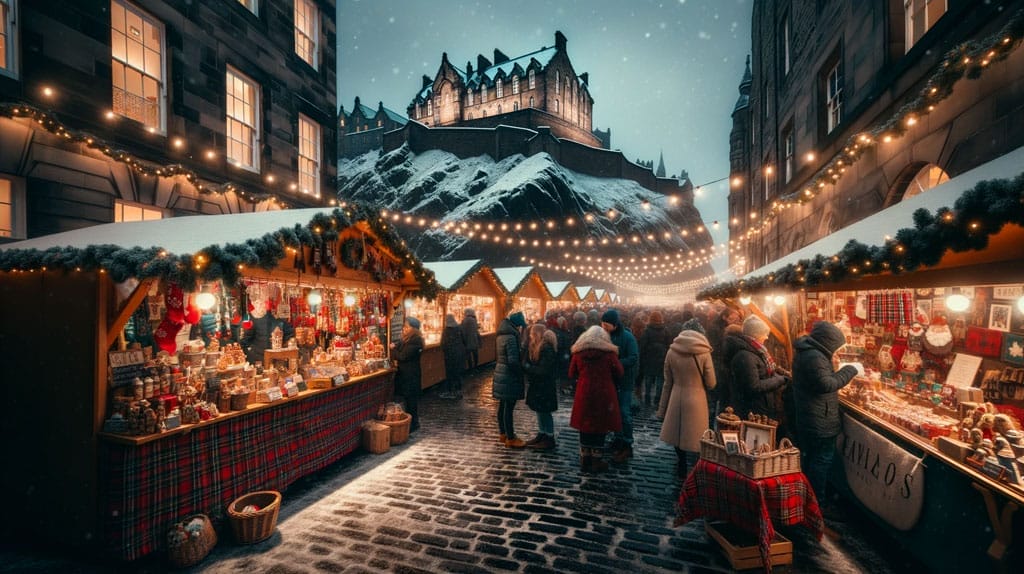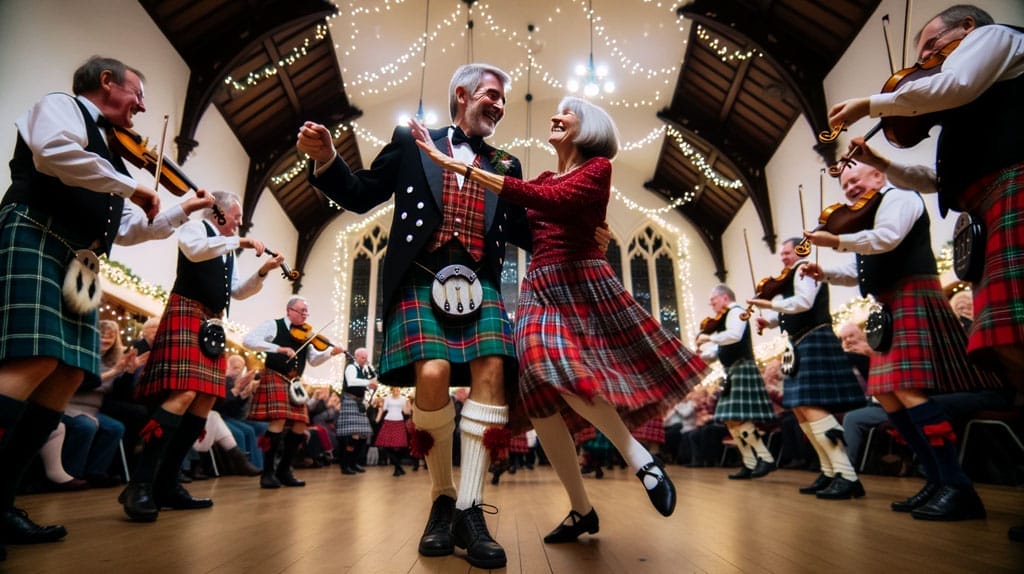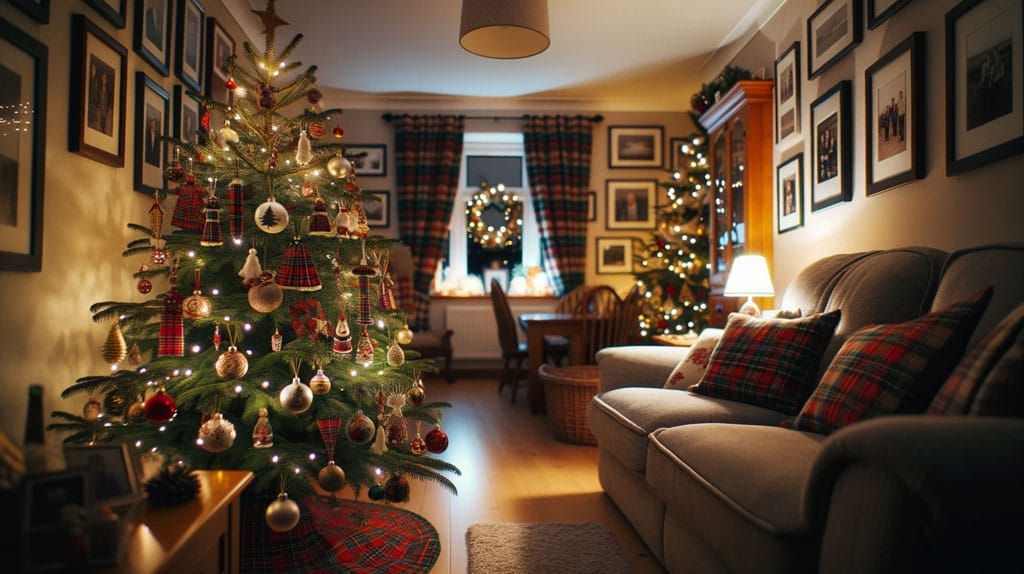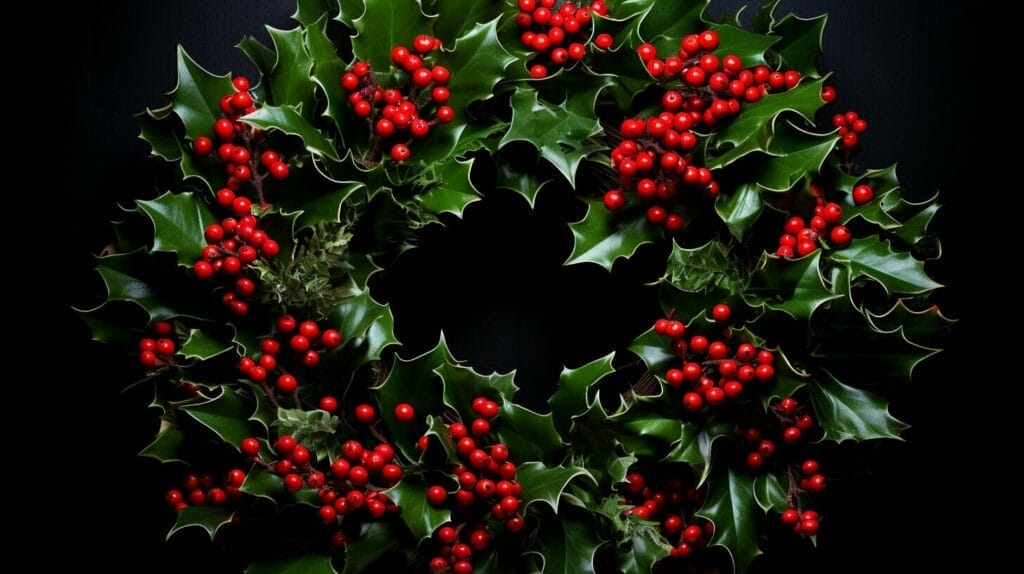Your Guide to Scottish Christmas Traditions

As the snow blankets the rugged Scottish landscapes and the air fills with the aroma of mulled wine, Scotland comes alive with its unique and heartwarming Christmas traditions. From the bustling streets of Edinburgh to the tranquil Highlands, the Scots have a way of celebrating the festive season that intertwines deep-rooted historical customs with modern revelries, making it a truly magical experience for locals and visitors alike.
The beauty of a Scottish Christmas is not just in its present-day celebrations, but also in the rich tapestry of stories and practices that trace back through the annals of time. Exploring these traditions offers a captivating journey into Scotland’s past, shedding light on how ancient rituals have evolved and shaped the way Scots commemorate this cherished holiday today.
In this guide, we will explore the different aspects of Christmas in Scotland, from ancient yule customs to festive tartan patterns and delicious Scottish treats. Discover how the Scots celebrate Christmas and embrace their traditions to add a touch of Scottish flair to your own celebrations.
Key Takeaways:
- Scottish Christmas traditions offer a rich tapestry of festive celebrations.
- From yule customs to tartan patterns and delicious treats, Scotland’s traditions honor its heritage and add warmth and joy to the season.
- Embrace Scottish traditions to add a unique touch to your own Christmas celebrations.
Scotland’s relationship with Christmas is a tapestry woven with threads from various cultures. Historically, the celebration of Christmas in Scotland was overshadowed by Hogmanay, the Scottish New Year’s Eve.
Why was Christmas Banned in Scotland
During the Reformation in the 16th century, the Presbyterian Church, which held considerable influence over Scottish life, viewed Christmas with skepticism due to its perceived pagan origins and lack of biblical endorsement.
As a result, Christmas was officially banned in Scotland for nearly 400 years, and it wasn’t until 1958 that Christmas Day became a public holiday in Scotland. During this period, while Christmas festivities were subdued, the Scots channelled their celebratory energies into Hogmanay, turning it into a grand event filled with its own unique customs and traditions.
The influences on Scottish Christmas traditions are both ancient and diverse. From the Norse Vikings came the Yule log and the reverence of the winter solstice, while the Celts contributed with their festivities marking the end of the winter darkness.
Over time, as Scotland interacted more with its neighbors, especially England, many classic Christmas elements like the Christmas tree, caroling, and gift-giving were incorporated into the Scottish festive scene.
Today, while Scotland embraces many universal Christmas customs, it does so with its own distinctive flair, blending centuries-old traditions with contemporary celebrations, making Scottish Christmases a unique fusion of the old and the new.
Christmas Ceilidh Dance and Gaelic Carol Singing
The Christmas Ceilidh Dance is one of the most spirited and cherished traditions in Scotland during the festive season. As the days grow shorter and the nights colder, communities come together in village halls, homes, and grand ballrooms to partake in this lively social dance.

The word “ceilidh” (pronounced “kay-lee”) is Gaelic for “gathering” or “party,” and true to its name, it’s an occasion for people of all ages to meet, share stories, and dance the night away. Traditional Scottish music, played on the fiddle, accordion, and bagpipes, sets the rhythm, while a “caller” guides both seasoned dancers and novices through the steps, ensuring everyone can join in the fun.
The dances, often in pairs or circles, are energetic and full of joy, making the ceilidh a highlight of the Scottish Christmas celebrations. From the Dashing White Sergeant to the Strip the Willow, the Christmas ceilidh dance is sure to get you moving and grooving with the Scots.
Step-by-Step Guide to Scottish Christmas Ceilidh Dancing
If you’re new to the Christmas ceilidh dance, don’t worry – it’s easy to learn and will have you dancing in no time.
| Dance Name | Description |
|---|---|
| The Dashing White Sergeant | A joyful and lively dance involving three people, with a series of movements and turns. |
| The Gay Gordons | A romantic and elegant dance involving a couple, with slow and graceful movements. |
| The Strip the Willow | A high-energy and fast-paced dance involving two rows of dancers, who weave in and out of each other. |
These are just a few examples of the many dances you might encounter at a Scottish Christmas ceilidh dance. Don’t be afraid to ask someone to show you the steps, as the Scots are known for their warm and friendly hospitality.
Discover the Beauty of Scottish Gaelic Carol Singing
Alongside the dance, the Gaelic carol singing is another cherished Scottish Christmas tradition. The Gaelic language is an ancient and beautiful Celtic language that is still spoken in Scotland today. The Gaelic carols are a unique and moving part of the Scottish Christmas tradition, with heartfelt lyrics and melodies that have been passed down through generations.
If you’re unfamiliar with Gaelic carol singing, it might be helpful to learn a few common Gaelic words and phrases:
- Nollaig Chridheil – Merry Christmas
- Beannachd Dhuibh – Good Wishes to You
- Òran na Nollaig – Song of Christmas
- Tàladh ar Slànuidh – Lullaby of Our Saviour
With these phrases in mind, you’ll be able to join in with the Gaelic carol singing and appreciate the beauty of this uniquely Scottish tradition.
“The Gaelic carol singing is one of the most beautiful and moving parts of the Scottish Christmas tradition. It reminds us of the rich history and culture of Scotland, and the enduring spirit of the Scottish people.”
Festive Kilt Outfits and Traditional Scottish Stockings
When it comes to Christmas in Scotland, festive attire plays a significant role in adding a touch of tradition to the celebrations. The kilt, often associated with Scottish culture, is a popular outfit choice for the Yuletide season. The distinctive tartan patterns of kilts add a vibrant touch of color to Christmas gatherings and celebrations.
To complete the festive look, traditional Scottish stockings are a must. These stockings, often made of wool, are adorned with intricate designs and patterns. They also feature a unique design with a loop at the top, enabling them to be hung from a hook or fireplace mantle.
If you’re looking to embrace the Scottish Christmas spirit, consider incorporating a kilt outfit and traditional Scottish stockings into your celebrations. It’s the perfect way to add a touch of Scottish flair to your festive season.
Scottish Tree Dressing
Tree dressing is a time-honored tradition in Scotland that transcends mere decoration, weaving together elements of nature, community, and history. Rooted in ancient Celtic customs, it was believed that trees held spirits and were of significant spiritual importance. By adorning them, particularly during significant times of the year like the winter solstice, communities aimed to honor and appease these spirits, ensuring prosperity and protection.
Over time, this evolved into a festive ritual, especially around the Christmas season, where families and communities come together to decorate trees, both indoors and outdoors, with a myriad of ornaments, lights, and tinsel.

In modern-day Scotland, tree dressing also serves as a reflection of local culture and heritage. It’s not uncommon to find trees bedecked with tartan ribbons, clan emblems, and other symbols representing Scottish history. Furthermore, community tree dressing events have become a popular way to strengthen communal bonds.
Villages and towns often host gatherings where everyone can contribute an ornament, turning the tree into a collective work of art that embodies the spirit of unity, tradition, and celebration.
Scottish Mistletoe Folklore
Mistletoe is an essential part of Christmas decorations, and Scottish mistletoe folklore is both enchanting and fascinating. According to Scottish traditions, mistletoe is a sacred plant that symbolizes fertility, love, and protection against evil spirits.
One of the most popular Scottish mistletoe traditions is to hang a sprig of mistletoe over the front door. Scots believe that it would ward off evil spirits and bring good luck into their homes. Another tradition is to place mistletoe under the pillow before going to bed on Christmas Eve to have dreams that would reveal the future.
Scottish mistletoe folklore is also associated with the New Year’s Eve tradition of first-footing. It is believed that the first person to enter the house after midnight on New Year’s Eve would bring good luck for the coming year. The presence of mistletoe in the house is supposed to enhance the chance of a successful first-footing.
| Mistletoe Facts | Traditions |
|---|---|
| Mistletoe is a parasitic plant that grows on trees. | Hang a sprig of mistletoe over the front door for good luck and protection. |
| The tradition of kissing under the mistletoe dates back to ancient times when it symbolized fertility and love. | Place mistletoe under the pillow on Christmas Eve for prophetic dreams. |
| The Norse believed that mistletoe was a symbol of peace, and enemies could declare a truce when they met under a tree with mistletoe. | The presence of mistletoe in the house is supposed to increase the chance of a successful first-footing on New Year’s Eve. |
Winter Solstice Feasts and Scottish Advent Rituals
Scotland has a rich history of celebrating the Winter Solstice, marking the longest night of the year and the return of light and warmth. Traditionally, it was a time for feasting and merrymaking with loved ones, and many of these customs continue to this day.
Scotland celebrates St. Andrew’s Day on November 30th, which ushers in the Advent season. St. Andrew is the patron saint of Scotland, and the day is celebrated with feasting, music, and dancing.
The Winter Solstice falls on December 21st or 22nd, and it is the perfect time to gather with family and friends for a festive feast. In Scotland, this feast is known as the Yule dinner, and it is a time to indulge in hearty dishes and raise a glass to the season. Some traditional dishes served during the Winter Solstice feast include haggis, neeps and tatties (turnips and potatoes), and roast beef or venison.
In addition to the Yule dinner, Scotland also celebrates the Advent season, which lasts for the four Sundays leading up to Christmas. Each Sunday leading up to Christmas, a new candle is lit to symbolize hope, love, joy, and peace. The final candle, the Christ Candle, is lit on Christmas Day.

Another Scottish Advent tradition is the hanging of the Advent wreath. The wreath is made from holly and evergreen branches and is adorned with four candles, one for each Sunday of Advent. Families often gather around the wreath to read scriptures and sing carols.
Celebrate Like a Scot with Delicious Scottish Treats
One of the best ways to experience the warmth and joy of Scottish Christmas traditions is through the hearty feasts and traditional recipes. Scottish cuisine is rich and flavorful, offering a variety of unique dishes that are perfect for the festive season.
Some of the most popular Scottish Christmas desserts include:
| Dessert | Description |
|---|---|
| Clootie Dumpling Dessert | A sweet and spicy pudding made with dried fruit, suet, breadcrumbs, and spices, then wrapped in a cloth and boiled. |
| Christmas Spiced Porridge | A creamy porridge made with oatmeal, spices, and dried fruit, served warm and topped with cream and honey. |
| Yule Bannock Bread | A traditional Scottish bread made with flour, butter, and sugar, with dried fruit and spices added for a festive touch. |
| Festive Cranachan Dessert | A dessert made with cream, honey, toasted oats, and fresh raspberries, topped with a drizzle of whiskey for added flavor. |
| Scottish Festive Shortbread | The classic Scottish shortbread cookie, with a festive twist. Made with butter, sugar, and flour, and shaped into festive designs such as Christmas trees or stars. |
These desserts are just a small taste of the delicious treats Scotland has to offer during the Christmas season. In addition to sweets, the Scottish Christmas feast includes savory dishes like haggis, neeps and tatties (turnips and potatoes), roast beef, and salmon.
Clootie Dumpling Dessert

Clootie dumpling dessert is a traditional Scottish dessert that is enjoyed during the festive season. It’s a steamed pudding that is made with flour, dried fruit, suet, and spices, then wrapped in a cloth and boiled. The name “clootie” comes from the cloth used to boil the pudding – a “cloot”. The end result is a deliciously moist and spicy pudding that is perfect with custard or cream.
Christmas Spiced Porridge
Christmas spiced porridge, also known as “Atholl brose”, is a warming Scottish breakfast dish that is perfect for Christmas morning. It’s made with oatmeal, cream, honey, and a generous splash of whisky, then spiced with cinnamon, nutmeg, and ginger. The result is a creamy, aromatic porridge that is sure to get you in the festive spirit.
Festive Cranachan Dessert
Cranachan is a traditional Scottish dessert that is made with whipped cream, whisky, honey, and toasted oats. For a festive twist, try adding dried fruit, such as cranberries or raisins, to the mixture. The result is a rich and creamy dessert with a satisfying crunch from the toasted oats.
Scottish Festive Shortbread
No Scottish Christmas celebration is complete without a batch of festive shortbread. These buttery, crumbly biscuits are made with just three simple ingredients – butter, sugar, and flour – and can be cut into any festive shape you desire. For a truly Scottish twist, try adding a sprinkle of heather honey or a pinch of sea salt to the mixture before baking.
Region-Specific Scottish Christmas Traditions
From the bustling streets of its cities to the tranquility of its islands, each region has its own unique traditions that have been passed down through generations. Here’s a look at some of the most cherished Christmas customs from various parts of Scotland:
- Edinburgh’s Christmas markets: The capital city transforms into a festive wonderland with its renowned Christmas markets. Lined with stalls selling artisan crafts, traditional treats, and mulled wine, the markets offer a magical experience set against the backdrop of historic Edinburgh. This tradition draws both locals and tourists, making it a highlight of the season.
- Skating on Duddingston Loch: A cherished winter tradition, locals and visitors alike venture to Duddingston Loch, when frozen, to enjoy ice skating amidst the scenic beauty of nature. This activity not only offers fun but also a moment of reflection in nature’s serene setting.
- Orkney tippenny traditions: In Orkney, it’s customary to enjoy “tippenny” ale during festive gatherings, a strong brew that brings warmth and cheer to the cold winter nights. This ale, steeped in tradition, enhances the festive spirit among the Orkadians.
- Shetland’s Yule customs: Shetland celebrates Yule with unique customs, including the burning of a Viking longship in a grand fire festival, symbolizing the end of the old and the beginning of the new. This dramatic display is a testament to Shetland’s Viking heritage.
- Hebrides festive customs: The Hebridean islands hold tight to their Celtic roots, celebrating with ceilidhs, Gaelic carol singing, and feasting on traditional dishes like the Hebridean mutton pie. These islands, with their strong cultural identity, make Christmas truly special.
- St. Nicholas Day Scotland: Celebrated on December 6th, St. Nicholas Day sees children placing their shoes outside, hoping to find them filled with treats the next morning, commemorating the kindness of Saint Nicholas. This day is eagerly anticipated, especially by the younger generation.
- Highland Christmas fayres: The Scottish Highlands come alive with numerous Christmas fayres, showcasing local crafts, foods, and the spirit of the community in the stunning mountain setting. These fayres, set amidst the majestic Highlands, offer a unique shopping experience.
- Glasgow Christmas lights: Glasgow dazzles visitors with its grand Christmas light displays. The city streets and landmarks are illuminated, creating a radiant festive atmosphere that warms the heart. This spectacle transforms Glasgow into a city of lights.
- Aberdeen’s festive parades: Aberdeen hosts grand festive parades, featuring beautifully decorated floats, performers, and a lively atmosphere, making it a must-visit for those in the region during the holidays. These parades showcase the city’s festive spirit and creativity.
- Isle of Skye Yuletide: Known for its breathtaking landscapes, the Isle of Skye has its own set of Yuletide traditions, including communal feasts, storytelling sessions, and a deep appreciation for the natural beauty surrounding them. The island’s traditions mirror its mystical aura.
- Christmas in Scottish glens: The picturesque glens of Scotland, with their snow-capped peaks and serene beauty, have their own quiet celebrations, often involving close-knit communities coming together to share joy and warmth. These gatherings in the glens are a testament to Scotland’s strong sense of community.
- Festive Scottish clans gatherings: Christmas is a time for clans to gather, reinforcing bonds and celebrating their shared heritage. These gatherings often involve traditional music, dances, and recounting tales of ancestors. They serve as a reminder of Scotland’s rich clan history.
FAQ
What are some popular Scottish yule customs?
Scottish yule customs include the tradition of first-footing, where the first visitor after midnight brings good luck for the coming year, as well as the lighting of the yule log and the exchange of gifts.
What is a ceilidh dance?
A ceilidh dance is a traditional Scottish social gathering where people come together to dance and enjoy live music. It is a festive and energetic celebration that is often held during Christmas time.
What is Gaelic carol singing?
Gaelic carol singing refers to the singing of traditional Scottish Christmas carols in the Gaelic language. It adds a unique and melodic touch to the festive season in Scotland.
What are some traditional Scottish recipes for Christmas?
Some traditional Scottish recipes for Christmas include clootie dumpling dessert, Christmas spiced porridge, Yule bannock bread, festive cranachan dessert, and Scottish festive shortbread. These dishes are known for their rich flavors and festive ingredients.
What is the tradition of Scottish tree dressing?
Scottish tree dressing is the practice of adorning trees with festive decorations during the Christmas season. It adds a touch of beauty and cheer to the surroundings, creating a festive atmosphere.
What is the significance of winter solstice feasts?
Winter solstice feasts are celebrated in Scotland to mark the shortest day of the year and the beginning of longer days. They are a time for gathering with loved ones, enjoying good food, and celebrating the return of light.
What are some Scottish Christmas fairytales?
Scottish Christmas fairytales are filled with mythical creatures and magical stories. Some popular tales include “The Yule Lads,” “The Selkie Bride,” and “The Kelpie’s Gift.” These stories capture the imagination and transport readers to a world of enchantment.
What is the significance of festive kilt outfits?
Festive kilt outfits are worn in Scotland to add a touch of tradition and elegance to Christmas celebrations. Kilts are a symbol of Scottish heritage and wearing them during the holiday season is a way to honor and embrace Scottish culture.
What are Scottish Christmas carvings?
Scottish Christmas carvings refer to intricately carved decorations that are used to adorn homes and Christmas trees during the festive season. They showcase the craftsmanship and artistic skills of Scottish artisans.
How can I incorporate Scottish traditions into my own Christmas celebrations?
You can incorporate Scottish traditions into your own Christmas celebrations by incorporating festive tartan patterns into your decorations, adding Saltire flag decorations, trying out traditional Scottish recipes, and learning and sharing Scottish Christmas fairytales with family and friends.
What are some delicious Scottish treats for Christmas?
Some delicious Scottish treats for Christmas include clootie dumpling dessert, Christmas spiced porridge, festive cranachan dessert, and Scottish festive shortbread. These treats are loved for their rich flavors and are a delightful way to indulge during the holiday season.




